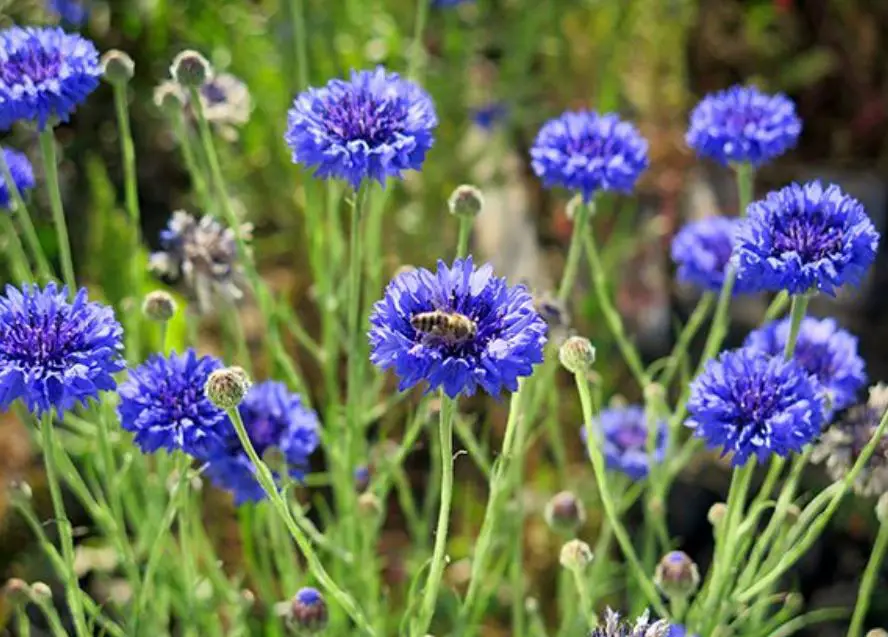Gardeners like spring bulbs because they are the first blooms to appear in the winter, with some even blossoming when snow is on the ground. Encouraging pollinators is another excellent reason to appreciate these bulbs. It is difficult for bees and insects that depend on flowers in the early spring. With some pollinator-friendly bulbs, give them a boost.

The Finest Bee-Friendly Spring Bulbs Are Native
It includes all pollinators, not just bees. Native species provide the finest resources since they coevolved with pollinators. Native bulbs are best for a butterfly garden or to encourage the local bee population. For many gardens in North America, these are some excellent choices:
- Trout Lily – Most of the eastern United States is home to this genuine bulb. These flowers get their name from their fish-shaped, speckled yellow leaves. You may help the trout lily bee, a species that developed with the bloom, by planting trout bulbs in the autumn.
- Spring Beautiful – Claytonia virginica is also indigenous to the eastern United States. While it is a corm rather than a genuine bulb, it may be planted alongside bulbs in the autumn. The blooms have five white petals with pink stripes, making them delicate and attractive. The little bee Andrena erigeniae is supported by the short-lived spring beauty.
- Dutchman’s Breeches – This poetic name characterizes the form of the blossoms, which resemble upside-down trousers in a creamy white tint. The leaves are quite lovely and resemble ferns in texture. The Eastern United States and the Pacific Northwest are home to Dutchman’s breeches. These blooms appeal to bumblebees.
- Virginia bluebells – Despite its name, this charming springtime bloom is indigenous to several eastern and some central U.S. states. You may plant Virginia bluebells in the autumn with spring bulbs since they have more rhizomes than bulbs. Pollinators love the bell-shaped blossoms that appear when the petals open.
- Jack-in-the-Pulpit – Yet another name that precisely matches the flower’s form. A huge, hooded spathe (pulpit) is produced by each plant, which encircles a spike of tiny flowers (Jack). These peculiar flowers, cultivated from corms, bloom early in the spring and do well in shaded, forested places. Also, later in the summer, Jack-in-the-Pulpit will yield berries that may be used to feed local birds.
Non-Native Pollinator Bulbs
While native spring bulbs are the greatest for pollinators, they will also like certain non-native varieties. No need to deprive yourself of the beauty of your preferred spring blossoms, such as tulips and daffodils; just make informed choices to best support your neighborhood pollinators.
Several non-native species were crossed to create hybrids. However, many of the modifications rendered them less beneficial to pollinators. For instance, the masses of petals on double and triple blossoms make it hard to access the nectar. Some hybrids may not smell as well and do not attract pollinators.
Choose non-heavily modified types of non-native bulbs to incorporate into your garden. The finest non-native spring bulbs for supporting pollinators in the early spring are crocuses, simple tulips, and Muscari (grape hyacinth).
Earliest Spring Bulbs
Your pollinators, whether native or not, will value having early bloomers towards the end of winter. A pollinator that emerges when the weather warms but before many flowers have blossomed is in a difficult situation. Add some of the bulbs and corms that bloom early in the late winter and early in the early spring to offer them the best chance of surviving during this difficult time:
- Snowdrops
- Crocus
- Glory-of-the-snow
- Striped squill
- Siberian squill
- Iris reticulata
- Yellow trout lily
- Spring beauty
Whichever spring bulbs you decide to plant, do it in the autumn. They will blossom on schedule in the spring, thanks to this. Pay attention to each plant’s instructions, which often call for digging a deep hole and correctly inserting the bulb.

